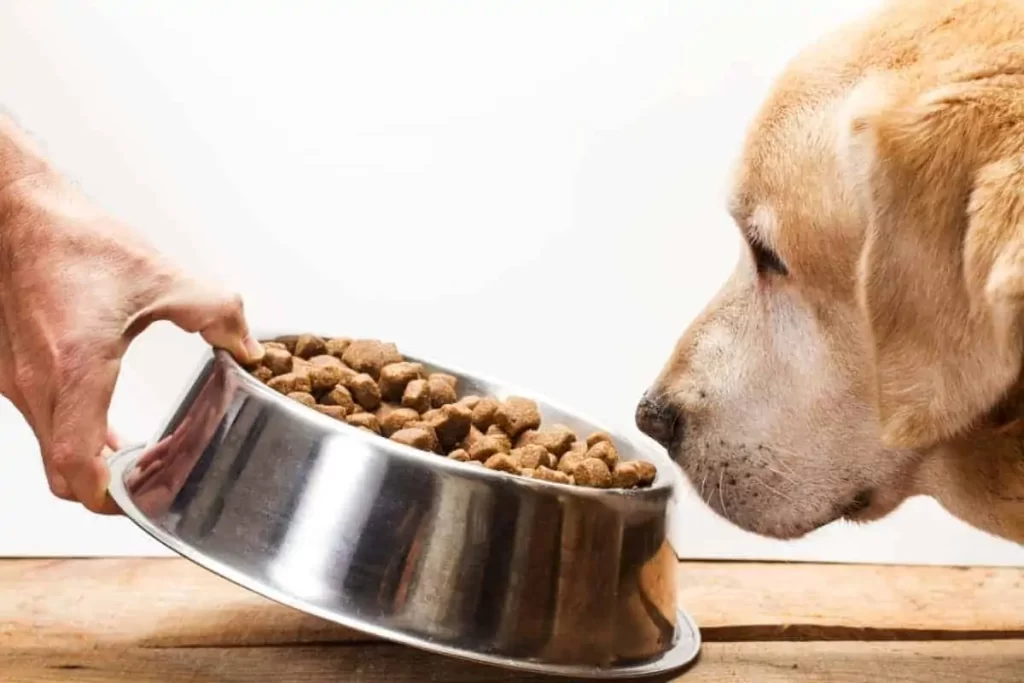Although many people have the misconception that dogs will eat just about everything, some dogs may really be rather picky about what they eat from their bowls.
An overview of feeding a picky eater
Fussy eating can be a difficult behaviour, but with persistence and knowledge of their reasons, you can prevent it from becoming a habit.
Here are a few preliminary pointers to bear in mind:
- Praise them profusely for finishing their own meal from the bowl.
- Don’t let anybody eat anything from your plate, especially secret nibbles.
- Just give them training aids as snacks.
- Make your dog’s food more enticing by
- Be persistent and consistent in your feeding techniques.
- Consider consuming a different kind of food.
What ought I to do if my dog refuses to eat?
It’s essential to have your dog examined by a veterinarian to help rule out anything more severe as there might be a lot of various reasons why your dog isn’t eating. Your dog may not be interested in eating for a variety of reasons, including certain diseases, dental issues, allergies, or even drug reactions. Speak with your veterinarian if you have any worries about your dog’s feeding habits so they can assist rule out any potential health issues.
Other reasons for a lack of appetite
It’s possible that some dogs are less interested in eating than other dogs are. They might not be as active or they might not have as much of an appetite. There isn’t much cause for concern if your dog is content and you’ve confirmed with your veterinarian that they are healthy and not underweight.
How to recognise a picky eater
Your dog may not be interested in what is in their dish since they are picky eaters. Your dog is probably simply being fussy about what they eat if they turn their nose up at their meal but show interest in what you’re eating or their favourite treats.
If your dog shows no interest in food at all, they may be ill, and you may need to consult a veterinarian.
Why does my dog refuse to eat?
It’s improbable that your dog was a picky eater from birth. Instead, their selective feeding tendencies possibly indicate that they’re a very intelligent dog. Your dog has learned that if they put off eating their typical daily meal, they are more likely to receive attention and—most importantly—are more likely to be fed a more appetising substitute.
How can I make my dog consume more food?
It’s time to figure out how to help your dog strengthen their relationship with their food dish if your veterinarian has determined that your dog is healthy. You must first recognise and understand why your dog chooses not to eat their food in order to better understand and modify their feeding behaviour.
Between meals, do they snack?
Because they are not hungry, some dogs might not be interested in eating the food you offer them. They may not be showing much interest in the food placed in their dish due to sneaky snacking. They may not be very interested in their meals, which might be understood by conducting a fast check with friends, family, neighbours, and trash cans.
Do the family members give them treats?
Family members occasionally give dogs tiny quantities of goodies. If a big family gives them treats from everyone, it might all add up and be enough to fill them full.
When you eat, are they nourished as well?
Do members of your family frequently feed your dog from their plates or smuggle food under the table? If so, your dog will probably be thrilled, but some human foods are unhealthy for dogs and may also be driving them to eat more leftovers than their own meal.
How can you make the food that your dog eats more enticing?
There are various methods you may use to encourage your dog to eat their meals:
- Try pausing for a time if you’ve been hand-feeding.
- Add a high-quality wet food to enhance the flavour of the dry food.
- To unleash the enticing fragrances of their food, try soaking their dry food in warm water or reheating wet food in the microwave.
Additional things to try
- In bowls made of glass or stainless steel, some dogs don’t want to see their own reflections. Consider using one made of ceramic, and make sure the bowl is kept clean.
- To help keep children mentally occupied as they eat, use interactive feeding toys. These toys are especially beneficial for dogs that are easily distracted by their surroundings since they release kibbles as they roll them around.
Be reliable
You must ignore your dog’s pleading and lavish them with attention and praise when they do eat from their bowl in order to try to encourage them to do so. Take their food away after 15 minutes if they choose not to eat it, and then offer them a new bowl of food a few hours later. Contact your vet if they still won’t eat.
Try a different meal.
You might also try switching to a dry complete meal made for “active” dogs if you’re still having trouble. Your dog won’t require as much food to get a similar amount of energy because these dog diets are carefully made and frequently quite concentrated.
These meals may be more alluring to your dog because they contain larger amounts of oil. Meanwhile, specially designed “sensitive” dishes have a high level of digestibility, which might occasionally tempt a picky eater.
If you do decide to alter foods, be sure to do it gradually to prevent your dog’s stomach from becoming upset. Start off by gradually adding more of the new food to your dog’s usual meal over the course of seven to ten days.


